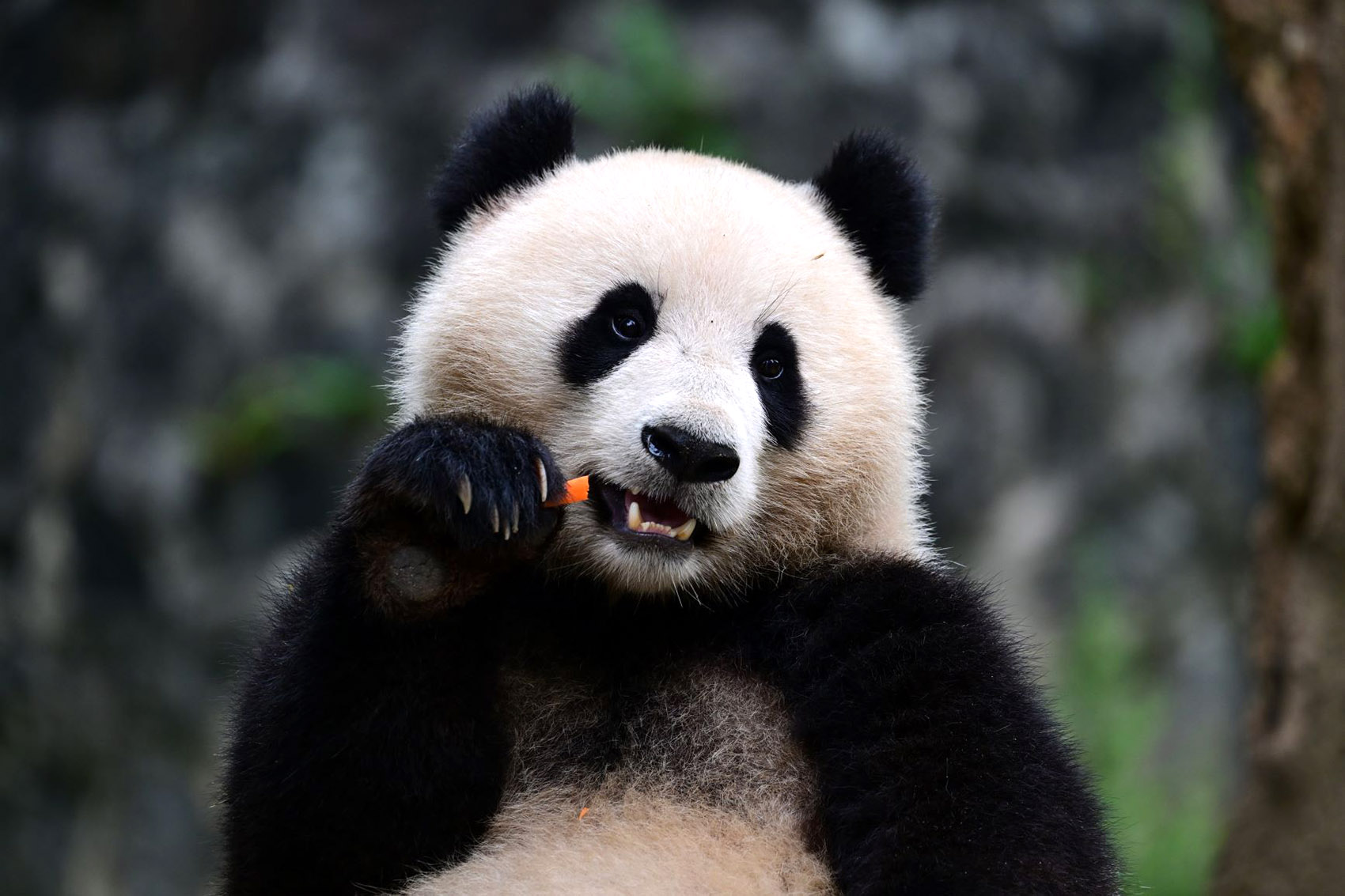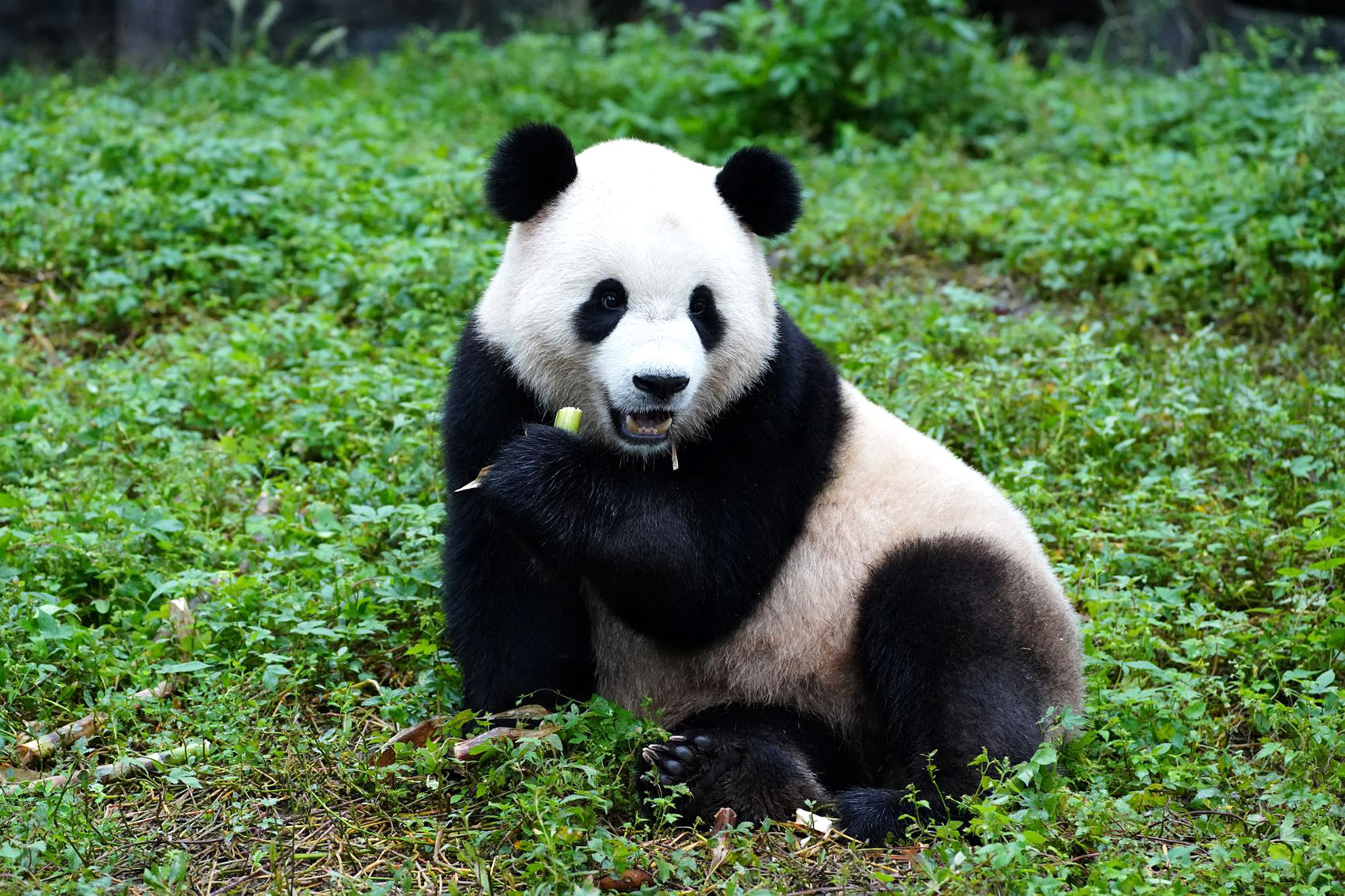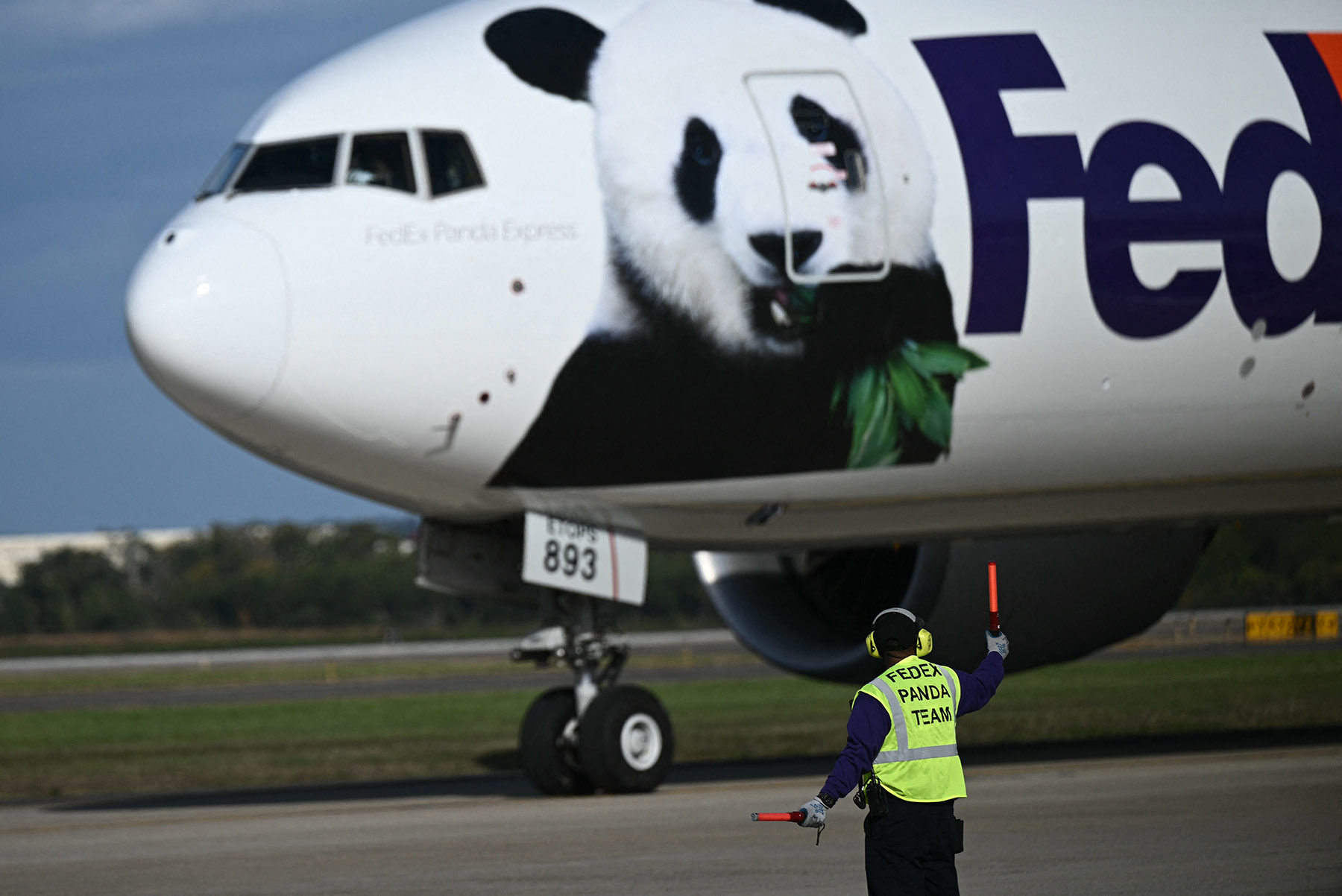Smithsonian’s National Zoo in Washington to host Bao Li and Qing Bao for 10 years

Three-year-old giant pandas Bao Li and Qing Bao arrived in Washington, DC, on Oct 15 for the beginning of a 10-year stay at the Smithsonian’s National Zoo.
An experienced Chinese breeder and a veterinarian have accompanied the pandas to help them acclimate to their new environment, according to the Sichuan province-based China Conservation and Research Center for the Giant Panda.
Both Bao Li, a male panda born in August 2021, and Qing Bao, a female born in September 2021, display lively characteristics and a fondness for climbing, according to the giant panda center.
Bao Li translates into English as “treasure” and “energy”, while Qing Bao means “green” and “treasure”.
Earlier this month, the National Zoo in Washington sent a team of keepers and veterinarians to China to participate in the care of the two pandas and in disease prevention efforts, in preparation for their journey to the United States, following the signing of a cooperation agreement in April between the China Wildlife Conservation Association and the zoo.
Chinese experts have also conducted multiple assessments in the US of aspects such as the giant pandas’ living environment, care management, food supply and healthcare, the giant panda center confirmed.
During a news briefing on Oct 15, Foreign Ministry spokeswoman Mao Ning said that in the future, experts will be sent to the US to conduct on-site inspections and evaluations and offer guidance.
“In accordance with the requirements and technical standards of international cooperation for giant panda conservation, China and the US will spare no effort to ensure the health and safety of giant pandas residing in the US,” she said.
In anticipation of their arrival, the zoo in Washington, under the guidance of Chinese experts, established a dedicated care team, ensured a stable source of edible bamboo, and enhanced the living quarters for the giant pandas.

The area where Bao Li and Qing Bao will live features a new grassland, pond and additional climbing structures.
In a post on social media platform X on Oct 14, the zoo said, “Something *giant* is coming to Washington, D.C. via the @FedEx Panda Express!”
The post also said the zoo would be closed to the public on Oct 15, and that “for the safety of the pandas and staff, we will not disclose any additional timing”.
Bao Li and Qing Bao departed on Oct 14 from the Dujiangyan base of the China Conservation and Research Center for the Giant Panda and were taken to Chengdu Shuangliu International Airport.
The bears were transported from Chengdu on a FedEx Boeing 777 cargo jet called the “Panda Express”, according to The Washington Post, and FedEx posted on X on Oct 14 that the Panda Express was “on the move”.
The FedEx cargo plane from Chengdu via Anchorage, Alaska, arrived at Dulles International Airport in northern Virginia on the morning of Oct 15.
In the past 24 years of collaboration between the China Wildlife Conservation Association and the National Zoo in Washington, China and the US have both made significant progress in conservation and breeding, disease treatment and public education, according to Chinese experts.
On its website, the zoo said, “Our goal is to raise $25 million to secure a future for giant pandas at the Smithsonian’s National Zoo and protect this magnificent bear species and the mountain forest habitats it calls home.”
Since the 1990s, China has collaborated with 26 institutions in 20 countries, including Spain, Japan and France, on giant panda conservation efforts. Through these partnerships, 41 litters comprising 68 giant panda cubs have been bred, leading to a global captive population of 728.
The new bears arrived 11 months after the zoo in Washington sent its three highly popular pandas — 25-year-old Mei Xiang, 26-year-old Tian Tian and their cub Xiao Qi Ji — home to China.

Pairs of breeding pandas at zoos in Memphis, Tennessee, and San Diego, California, already have returned to China, and the four pandas at the zoo in Atlanta, Georgia, left for China on Oct 12.
President Xi Jinping expressed support for continuing the giant panda conservation programs during a visit in November last year to San Francisco for a China-US summit and the 30th Asia-Pacific Economic Cooperation Economic Leaders’ Meeting.
Two pandas — Yun Chuan, a 5-year-old male, and Xin Bao, a 4-year-old female — arrived at the San Diego Zoo in August. They were the first pandas sent to the US in more than two decades. Two other pandas have been promised to San Francisco.
Liu Pengyu, a spokesman for the Chinese embassy in Washington, said the US was among the first countries to work with China on panda conservation.
“Since we started the cooperation program with the National Zoo in 2000, positive outcomes have been achieved in panda conservation and breeding, disease prevention and treatment, and public awareness,” Liu told China Daily on Oct 14.
Together, the researchers have successfully bred 17 panda cubs and solved a number of technical challenges, he added.
“The current round of cooperation will focus on prevention and treatment of major diseases, and protection of habitats and wild giant panda populations,” he said. “We hope the arrival of the pandas will inject fresh impetus into exchanges between China and the US, and help to stabilize the broader bilateral relationship as well.”
Elliott L. Ferguson II, president and CEO of Destination DC, the destination marketing agency for the US capital, said: “The giant pandas are an iconic part of the Washington, DC … The interest and excitement associated with their return directly benefits the entire city, bringing further interest and visitors to our hotels, restaurants and other attractions.”
Agencies contributed to this story.
Contact the writers at yandongjie@chinadaily.com.cn


